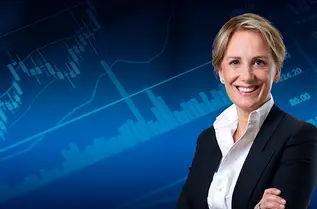Summary
Most market moves at the end of 2024 have been reversed in early 2025. Pension funds are still enjoying a strong financial position on average, but the current environment has become highly unstable.
Market review of the last few months: From measured optimism to growing instability
From the end of October 2024 to mid-March 2025, financial markets navigated a complex landscape shaped by geopolitical developments, including threats of US tariffs. In the United States, the S&P 500 rose by 2.4% in the fourth quarter, buoyed by a rally in November following the presidential election. However, December saw a decline of 2.4%, largely due to a hawkish shift from the Federal Reserve that surprised many investors. 2025 began positively, but current tariff threats had a very strong negative impact on the S&P, losing around 10% from mid-February to mid-March. US Treasury yields rose significantly during Q4 2024, with the 10-year yield moving from 3.8% to 4.6%. This rise reflected expectations of fewer rate cuts in 2025, but recent concerns on growth due to tariffs lowered the 10-year rate to 4.2% in February.
In Europe, equity markets struggled in Q4 2024, with the MSCI Europe index declining by 2.9%. This was followed by a strong rally at the beginning of 2025. The European Central Bank (ECB) cut its key deposit rate to 2.75% in January 2025, down from 3.0% in December, in an effort to stimulate the economy amid signs of stagnation. Long interest rates fluctuated during Q4 2024 and early 2025, but those rates rose sharply in early March (from 2.3% to 2.7% for the 10Y Euro swap rate), despite an additional ECB rate cut.
Inflation remained a central theme throughout this period. In the US, headline inflation rose to 2.6% in December, while core inflation remained stable at 3.3%. The Federal Reserve maintained its target range for the federal funds rate between 4.25% and 4.50%, adopting a cautious approach to rate cuts.
Currency markets reflected these dynamics, with the US dollar strengthening significantly, gaining 7.6% in the fourth quarter against a basket of currencies. In contrast, the euro weakened by 7.0% against the dollar. These effects were mostly reversed in early March.
Globally, the period from October to mid-March was neutral for US equities and positive for European equities, while interest rates went down both in the US and EU. These developments were very volatile, with a strong differentiation between geographies. Political uncertainties suggest that future behaviour of markets will likely remain highly volatile.
Impact on pension funds
In the US, funding ratios increased due to both higher yields, which lead to a reduction in liability valuations and a strong equity market that benefited assets. This trend continued in January, but reversed in February.
In Europe, variations in funding ratios where mainly driven by interest rates until the end of January, following a reverse pattern in the long-term Euro rate, with the additional help of positive equity performance.
In the UK, funding ratios were stable from the end of October to end of January, with February being negative due to lower yields. The full impact from current equity market movements has yet to be seen in March.

Overall, the funding situations across all regions is still very positive. Nevertheless, current geopolitical instabilities lead to higher risks not only on equities, but also on interest rates and inflation. Pension funds should therefore make sure that their hedging policies concerning the latter two are managed carefully in accordance with the current environment and their risk appetite.
Read more





